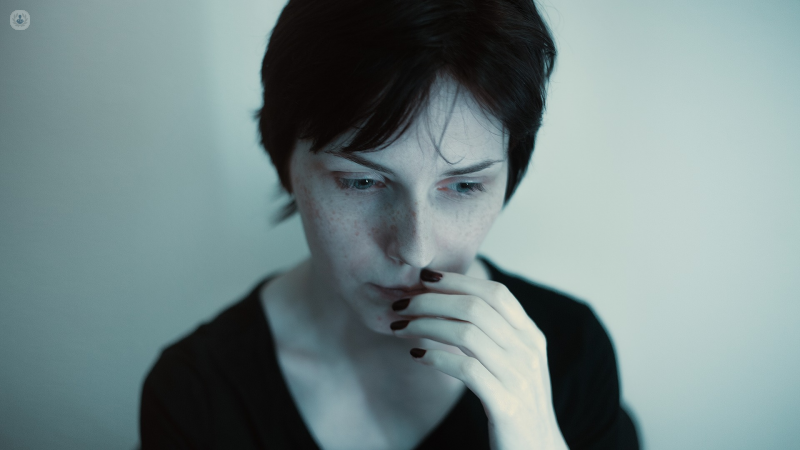Symptoms and treatment of panic disorder
Written by:The first time a person suffers a panic attack or panic attacks usually have a sense of impending doom; the symptoms are so intense and unexpected, that a sensation of real terror takes place, arriving at it to confuse in many occasions with a cardiac attack. It is usual to go to the emergency room in search of a physiological problem that explains that crisis, when in fact we are facing a psychological problem.
The most common symptoms of panic attack are:
- Tachycardia or palpitations
- Drowning sensation
- Sweating
- Tremor
- Pain or discomfort in the chest
- Sickness
- Dizziness, blurred vision, unsteadiness or fainting
- Feeling of unreality
- Fear of going crazy or losing control
- Affraid to die
These symptoms reach their maximum intensity in a short time (about 10 minutes), are usually accompanied by a sense of imminent danger and an urgent desire to escape from the situation where the crisis has arisen.
We can distinguish three types of crisis of anguish :
- Unexpected : when the attack is not related to any stimulus. It appears spontaneously, without cause (for example: a person can be in bed, reading and suffering a panic attack)
- Situational : when the crisis is triggered by some situational stimulus (for example: a person with social phobia can suffer a crisis when thinking that the next day he has to expose a work in public)
- Predisposed : they are similar to the situational ones but in this case there does not have to be any association with a stimulus. (For example: a person may suffer a panic episode in a department store, occasionally, from here on may be more predisposed to suffer it when returning to a similar establishment although this does not mean that the crisis has arisen from a situation of fear).
When these attacks are repeated unexpectedly and the person lives with the persistent fear of suffering a new crisis of panic, we are already talking about an anguish disorder.

Characteristics of anguish disorder
One of the characteristics of panic disorder is the vicious circle produced by catastrophic interpretations. The person before certain bodily sensations (such as palpitations or shortness of breath) makes a totally catastrophic interpretation of these symptoms: "I will lose control, I will choke, I will have a heart attack ...". These interpretations increase the anxiety and the initial bodily sensations, triggering in all probability a panic attack.
There is also a tendency to observe continuously, looking for any internal signal. This focus on the symptoms makes it even more likely that there is a sensation that starts up that vicious circle again.
In addition, the more crisis of anguish there is, the more fear there is to have them again; is what is known as "fear of fear". Anticipatory anxiety produces intense fear and this causes a person to start avoiding more and more situations, including avoiding leaving home completely, entering the "prison" of agoraphobia.
Complications of anguish disorder
Among the most common complications, derived from this disorder, are:
- Agoraphobia
- The abuse of anxiolytics and other medications
- The Depression
- The abuse of alcohol
- A marked deterioration and social, labor and personal disability
Treatment for anguish disorder
A few days ago a person called my query with the following question: "If I start a psychological treatment can improve my quality of life, even if I have to live with these panic attacks for life?"
Speaking a little more with this person, I noticed that he had a resigned and defeatist attitude ; He did not understand very well why that happened to him, he had not even considered that his disorder could be completely solved.
Actually if the anguish disorder is not diagnosed and treated properly it can acquire a very disabling chronic character, but the positive part is that with an effective treatment , the response is very good and the recovery rate very high.
The psychological treatment will be directed to:
- Teach the patient to modify the wrong beliefs about anxiety and crises.
- Learn to properly interpret physical sensations, not to enter the next spiral: physical sensation - catastrophic interpretation - fear or anguish - physiological excitement - panic attack.
- Expose to several stimuli, both internal and external.
- Training in relaxation techniques.
- Eliminate safety and avoidance behaviors (medicate at any minimum signal, flee from situations, avoid going to some places ...)
As for pharmacological treatment , it can help to regulate certain symptoms but if it is not combined with an adequate psychological treatment, the predisposition and vulnerability to the recurrence of these attacks will continue. Go losing the fear of anxiety and tolerate their presence, is the key to overcome this disorder in a definitive way.


